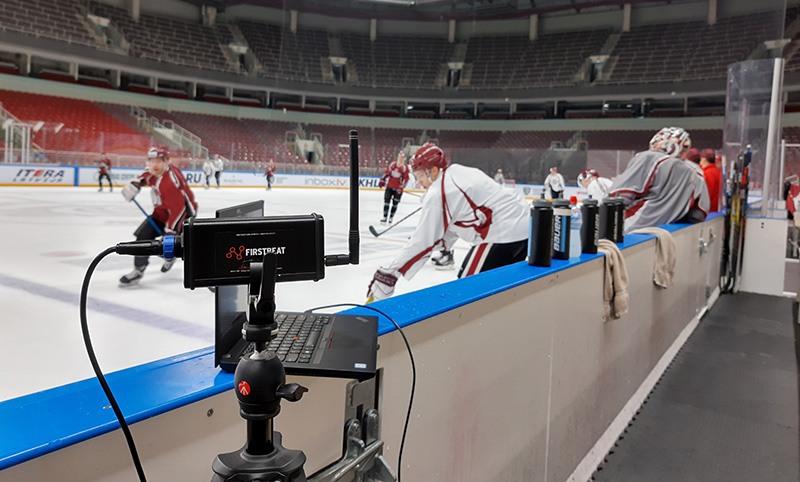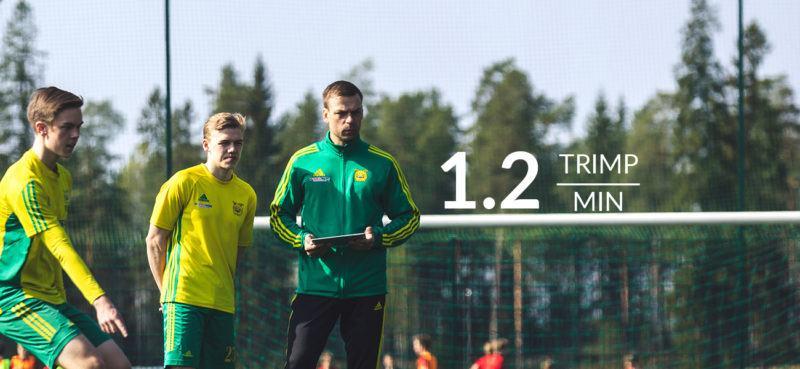
In this series, we’ll be introducing you to some of the coaches and staff taking advantage of the Firstbeat Sports solution to monitor training and recovery. We’ll get their personal view and experiences of how they use Firstbeat in their sport.
Name: Raivis Miezans
Nationality: Latvian
Sport: Ice Hockey
Role: Strength and Conditioning Coach
Team: Dinamo Riga
Firstbeat Sports technology used: Firstbeat Sports Premium
Dinamo Riga play in the Kontinental Hockey League (KHL), the premier professional ice hockey league in Europe and Asia. “Working with a key customer like Dinamo Riga has helped Firstbeat extend our knowledge on training methods and load management within the league,” says Christoph Rottensteiner, Firstbeat Sports Manager.
How long have you used Firstbeat data and feedback in your coaching?
This is my second year using Firstbeat Sports. It’s the first time I’ve worked with such a comprehensive system. Before we had individual athletes using wearable tech in their watches.
I’ve found it really simple to use and visually it is great. The info is simple and smart, and I like the reports feature. I can send the key info to the players themselves and use this as an educational tool.”
What does a typical week of training look like for the team?
It all depends on the time of the year. During training camp we have two on-ice sessions per day whereas, during the season we have three games a week so we have to find the right balance between training and recovery. Then during the offseason, we’re aiming to break things down so we can build the players up even better and stronger.
Want to better understand athlete well-being in pro sports coaching? Download our guide here
During the season, a standard practice day begins with short, dynamic stretching and some light cardio. Then we get the players on the ice for team practice and this is where we’re using Firstbeat Sports to monitor their physiological response.
After on-ice practice, there are individual workouts in the gym. Depending on the individual, this usually involves either extra cardio work or focusing on their recovery. Again, we track and record individual athlete responses using Firstbeat. We, as coaches, will look at the results – heart rate and other metrics – after practice to understand training load status and spot any potential problems.
What Firstbeat Sports metrics or features do you use most?
For on-ice practices, we’re looking at the HR zone data and the amount of time each player has spent in each zone during the session. This helps us see how hard we’re pushing the team and also track if players are able to recover within a session. We’re looking to see players’ heart rates peaking and then dropping as fast as possible after the high-intensity exercise/drill. Recovery time during a session is important to us – especially during the season.
We also look at TRIMP a lot when monitoring one-hour practices. Tracking the full roster means we can see if most players are averaging high-intensity work during the session.
TRIMP is also an important measurement for our assistant coaches working with the players not getting much game time. We use TRIMP to ensure a session is still letting them adapt to game intensity.”
Which position groups typically produce the highest TRIMP scores?
For us, it is always the forwards. But it depends on the tactics deployed. We play a very aggressive style so it is always the forwards.
How do the KHL’s travel and game demands affect what you can do in terms of training and recovery?
All our away fixtures are at least three hours away. Some are between 7-12 hours. And there’s a game pretty much every two days so there is a lot of travel. Focusing on recovery – e.g. getting enough sleep – is a big priority.
We use the Firstbeat Bodyguard device to track stress and recovery outside of practice and help gauge recovery during these road trips and after games. This includes monitoring during long flights or the hours after a game.
For example, sleep patterns differ a lot between home and road games. At home, the games finish at around 9 or 10 p.m., players can be at home by 11 and in bed by midnight. For road games you have to travel to the airport, fly at 1 or 2 a.m., and we might not arrive at the hotel until very late. Being able to see how different players respond to these situations is very valuable and can impact training decisions.
Can you give any examples of this?
Even for home games, because they finish at 10 p.m. this may be too late to achieve the desired amount of overnight recovery. Since using Firstbeat we have made sure we don’t schedule the following morning’s on-ice session too early and even suggest some athletes hold out of certain workouts.
How do you communicate the data to the players?
Some players are more interested than others in the results. As a rule, I try to give as much information as needed for them to improve without going too deep. Unless a player specifically asks for more detail.
I mostly use the data to help expand on other areas of focus like calories burned to explain the importance of their nutrition, or highlighting how to get more recovery into their regime etc.
If you liked this article, you should subscribe to our newsletter.
Images: Dinamo Riga and Raivis Miezans
Give your team the Firstbeat Sports competitive advantage.
Contact us for more information or get a quote.
You might also be interested in

Real-time TRIMP/min: How to Use the Firstbeat Sports App Feature in Training
From replicating game intensity to aiding player rehab, monitoring TRIMP/min has wide-ranging benefits.

Training Status: the Balance of Training for an Individual Athlete
A comprehensive breakdown of the Training Status feature in Firstbeat Sports.

Why Nearly 50% of NHL Teams Rely on Firstbeat for Results
Since 2008, Firstbeat Technologies has played a part behind the scenes at many of the North American league’s 31 franchises.



